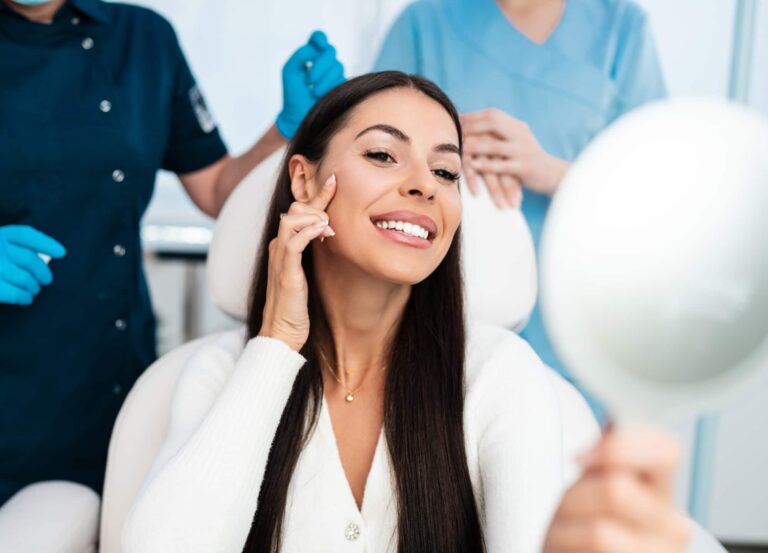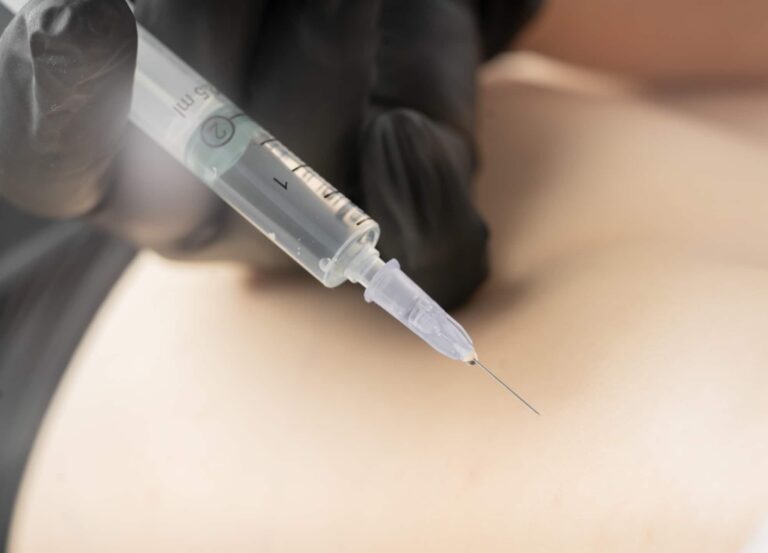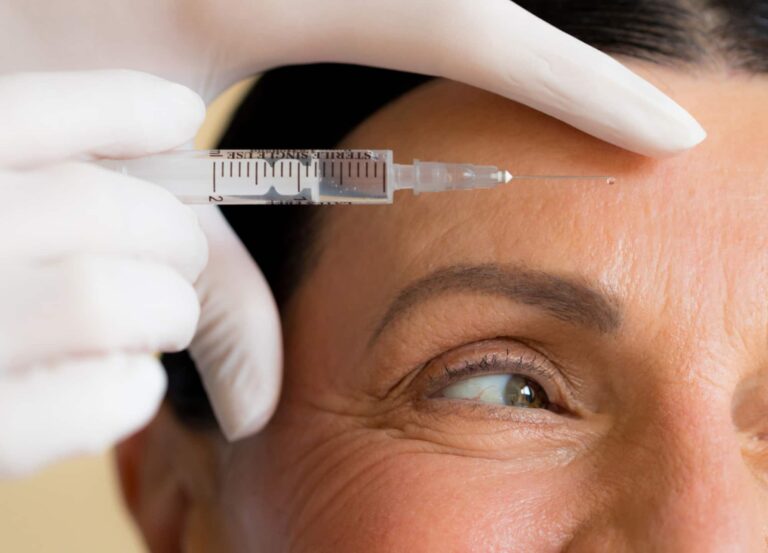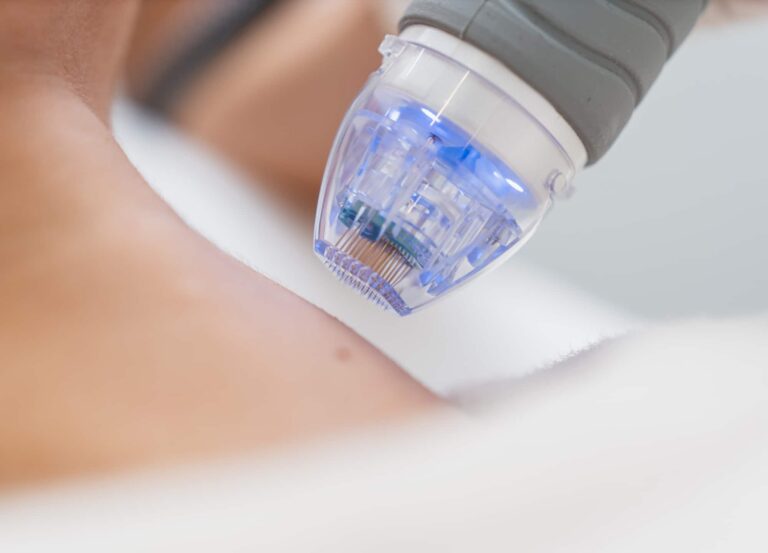As has been the case with seemingly everything from gas to a gallon of milk, the price tag on cosmetic procedures continues to rise. And with the cost of aesthetics increasing every year, the prospect of free filler or complimentary skin care can seem more tempting than ever. One of the best ways to score a coveted treatment without paying its hefty fee? Participating in a clinical trial.
However, while clinical trials can seem like the ultimate win-win, whereby you commit to regular appointments over the course of a few weeks or months in exchange for a free procedure or product that would otherwise cost up to thousands of dollars, they’re not always so simple. In order to take part in trials, you must meet a long list of eligibility requirements, consider the various pros and cons, and potentially sign away your rights. Here’s what you should know if you’re curious about getting involved in one, be it for a new product, device, or even cosmetic surgery.
What is a clinical trial?
Any new drug, device, procedure, or other product developed by a pharmaceutical company must undergo thorough testing to ensure that it both is safe and does what it purports to do. These medical studies, which examine both new and improved versions of existing therapies, involve human participants and will typically run through a number of phases. Companies will turn to centers of excellence—usually academic centers but also real-world medical practices—to conduct clinical trials, and they will designate a physician, as the principal investigator, to oversee the whole study.
For Dr. Macrene Alexiades, a board-certified dermatologist in New York City who has been the principal investigator on well over 75 clinical trials, this job comes with a lot of responsibility. “I help with protocol development, submission to IRB (institutional review boards), overseeing the trial, administering the treatments, writing up the manuscripts for publication, and presenting on the podium at meetings,” she says. “I will participate as an investigator only if I have time in my research schedule and can devote the necessary time and attention to the clinic.”
Before a clinical trial can begin, it must undergo a review by FDA officials and IRBs, to ensure the ethical treatment of its human subjects. The company must submit its protocol, goals of the study, inclusion and exclusion requirements, and forms of measurement for review from a safety standpoint and to confirm that the benefits outweigh the risks. IRBs must approve the studies before they can commence and also monitor progress thereafter. The actual trials often begin with some toxicology work, which can include animal testing, and will then move onto Phase I, which determines how the compound is absorbed, metabolized, and processed by the body and what the optimal dosage is. This sees a smaller subset of patients and exposes them to the drug or product for a short period of time, providing each with a different dosing level. Though there may be indications of efficaciousness at this point, determining this is not the main goal. Assuming no major safety concerns arise in Phase I, the trial moves to Phase II, where the safety is tested among a larger population of patients over an extended period of time, ranging from several months to two years.
“Ultimately, it’s your Phase III randomized control studies that really matter,” explains Diane Nelson, who has served as director of medical affairs at both Anacor Pharmaceuticals and Medicis Pharmaceuticals and currently oversees medical, clinical, and scientific affairs at SkinBetter Science. “What that means is that you have a placebo—or, in dermatology, a vehicle—that helps you compare the active versus the vehicle of topical product that doesn’t have the active. You want to show differences in improvement and safety between the active drug and nothing.” Phase III occurs among the largest cohort of patients and can last up to a few years. For this reason, the third and final phase is also the most important in ensuring that the agent lives up to its claims and is effective even in a much larger population. The data found here is then sent to a statistician and compiled into a report, which is submitted to the FDA as part of a new drug application (NDA). Even after the product has been approved though, additional studies are often conducted in order to see how it performs under “real world” conditions. And it bears mentioning that clinical trials also often examine patient satisfaction as well.
Related: 8 Assumptions You Should Never Make About Your Doctor
What products and devices are tested in a clinical trial?
Anything that requires FDA approval, including vaccines, prescription drugs (oral and topical) and medical devices, is legally required to be clinically tested in multiphase trials; over-the-counter and cosmeceutical products, on the other hand, have no such requirement. “Whenever you pick up a product off the shelf, you’re hoping that the company is being ethical and not misleading in any way,” says Nelson. “But in reality, a lot of companies don’t really have anything to back up their claims.” That’s where clinical trials, even though not required in the OTC and cosmeceutical space, can come into play. “At SkinBetter, we don’t have to do studies, but we want to put our money where our mouth is” Nelson explains. “We’re saying that we know a product improves the appearance of redness in skin, and we actually know that because we studied it for 12 weeks and measured it at different time points and took photos. We want to be able to provide evidence based on the claims we make.” [Editor’s note: the writer, Gabby Shacknai, is the daughter of SkinBetter’s executive chairman.]
Of course, in the non-FDA-regulated space, there is less oversight and no official committee to review the clinical research data. It’s therefore important for prospective trial participants and consumers alike to look for IRB-approved studies, reputable principal investigators, and for the institution governing the study to be in good standing.
How long do these trials last?
There is, unfortunately, no set timeline that’s true of all clinical trials. Depending on the product being tested, the therapeutic area being studied, and the participating population, these trials can last anywhere from a few months to more than a decade. “When you think about all those phases from a pharmaceutical perspective, it can take years to go through them all,” says Nelson. “The overall timeline really depends on the therapeutic area you’re studying, but it can take a very, very long time.” Particularly when the active being tested requires FDA approval, whereby the manufacturers must take their findings to the federal agency after each phase and gain approval before moving to the next, there is little predicting a trial’s duration. Because each trial phase typically sees a different cohort of patient participants, however, the time commitment as a participant is only a fraction of the total duration of the trial.
What do clinical trials require of participants?
Every clinical trial, when bringing on participants, will work within a set of inclusion and exclusion criteria, usually defined by the principal investigator and varying depending on the therapeutic area and active. This usually means that in order to participate, patients must fall within a certain age group or race or have a specific health issue. In addition to meeting these enrollment requirements, participants must forgo their existing medications, skin-care treatments, or products so that investigators may properly see the impacts of the active being tested. In dermatology, for example, participants must cease using any other skin-care product. “Sometimes, that requires a washout period, meaning that if I’m studying a retinoid product but a participant has been on another retinoid product, I need to wash them out as best I can,” explains Nelson. “We would require that you stop using that [product] a certain amount of time before starting the study, because we want everybody to start with a clean slate and on the same playing field.”
Clinical trial participants must also sign an informed consent form (ICF), which states that the physician’s nurse coordinator and/or research coordinator will go through all the requirements and potential risks of the clinical study. At the bottom of the ICF, there is a line stating that they can drop out of the study at any time, which, although a hindrance for the trial, is necessary to ensure the safety of the patient. Here, “they must also sign off on the use of the data and their photographs,” adds Dr. Alexiades. On top of all this, patients are asked to commit a certain amount of time for the trial and must adhere to a strict follow-up schedule, which can span months or even years.
Related: 7 Things to Know Before Signing a Cosmetic Treatment Consent Form
Are there plastic surgery clinical trials?
Yes, although ones for topical products, new treatments, and devices are arguably more prevalent. Many of the plastic surgery clinical trials center around implants, which the FDA considers to be medical devices. For that reason, they are commonly conducted for breast reconstruction or breast implants. Plastic surgery research also involves clinical research on medications that can help with things such as wound healing or pain after surgery. Keep in mind that there’s similar, if not more stringent, eligibility criteria for plastic surgery trials. It’s also important to fully understand all of the risks and potential side effects associated with the particular surgery, as is the case for any type of clinical trial or research study. To that point, it’s a good idea to speak with your healthcare provider before signing up for one.
Does participating in a clinical trial always mean a free treatment?
One of the obvious benefits to joining a clinical trial is getting your treatment for free. “Almost always, there is no charge for the patient,” says Dr. Roy Geronemus, a New York City dermatologic surgeon who has served as principal investigator on more than 100 trials. “And many times, the patient may even receive compensation.” However, keep in mind that free cosmetic surgery trials for plastic and reconstructive surgery might not always be entirely free. For example, you may not have to pay for a breast implant itself, but you may still have to pay the surgeon and anesthesiologist fees.
How can I sign up?
There are a number of websites that list clinical trials in the early stages, so looking on one of these is never a bad idea. The U.S. National Library of Medicine hosts a database of privately and publicly funded clinical trials around the world, where you can search by condition/disease or location, and CenterWatch is a great resource for clinical trial information, both for patients and medical professionals. (You can also search for them according to different specialties, including not only dermatology and plastic surgery, but also oncology, pediatrics, and more.) ClinicalTrials.com, ClinicalTrials.gov, and ClinicalConnection also list a large number of trials, and the World Health Organization provides an easy and accessible registry where patients and doctors can find each other. Additionally, the websites of individual medical practices often show all the trials they are participating in. Last, as Dr. Alexiades advises, “patients can contact the site where the research is being conducted and ask whether they can interview for a slot,” but she warns that individual centers have their own guidelines for accepting subjects for screening.











